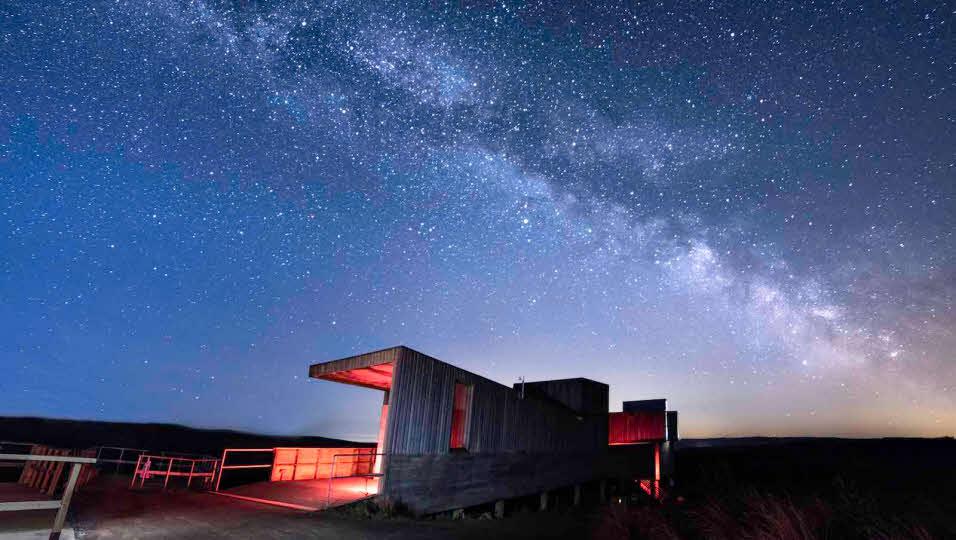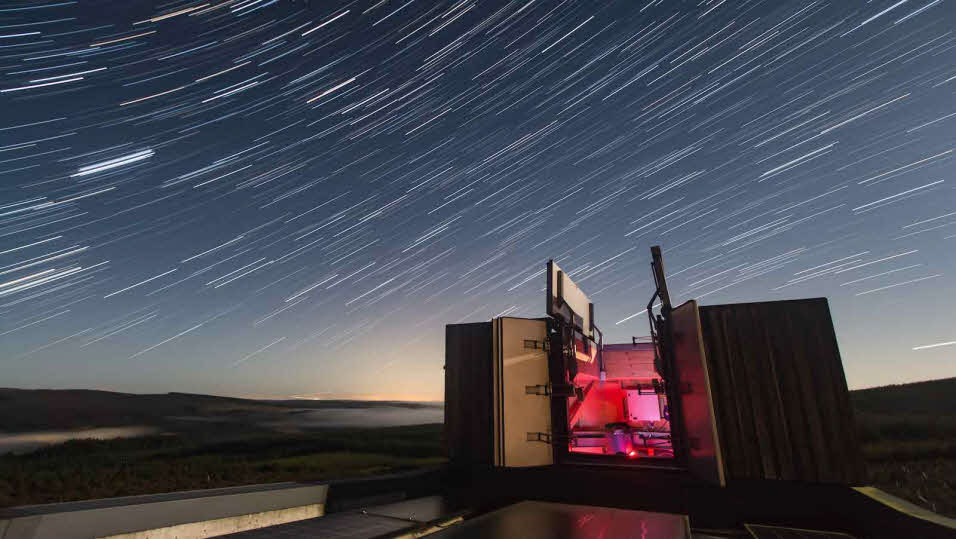Stargazing in Northumberland
The International Dark Sky Park in Kielder Forest is England’s premier venue for stargazing, a pitch-black nothingness in which the Milky Way sparkles and shines. Jonathan Manning and his daughter head to Northumberland to check it out.
By Jonathan Manning | 30 January 2020
 The Milky Way in full glory above Kelder Observatory ©Kielder Observatory Astronomical Society
The Milky Way in full glory above Kelder Observatory ©Kielder Observatory Astronomical Society
Darkness arrives with the stealth of a pickpocket. One moment the path ahead is obvious and Kielder Water is distinct from its shoreline; the next, the vast reservoir has vanished, the tree tops are indistinguishable from the ink-black sky and only a headtorch can provide guidance along the foresttrail.
This is deepest, darkest Northumberland, 572 square miles of gold-tier International Dark Sky Park. Prized for the absence of light pollution, the park is England’s premier venue for stargazing, a pitch-black nothingness in which the Milky Way sparkles and shines.
Today should be among the darkest nights of all. It’s less than 48 hours until the longest day of the year, and the moon is not due to rise until after midnight, leaving the stars free to enjoy centre stage. With the naked eye we should be free to see in excess of 2,000.
Living in a small Lincolnshire village of 65 houses, home is hardly a metropolis of Blackpool-scale illuminations, yet the depth of this Northumberland darkness is unprecedented. I had anticipated the gloom to be unsettling, but the lack of stimuli feels strangely calming.
Accompanied by my daughter we head for Kielder Observatory, two miles up a rain-lashed forest track on the flanks of the Black Fell. At the top a wind turbine spins like a Catherine wheel, and the sky is the colour of coal, without a pinprick of starlight.
Stay at Lidalia Caravan Park Affiliated site
It is an unpromising start but the staff at the observatory give us a warm welcome and suggest that the gale may clear the clouds before night is over. Their well-rehearsed back-up plan suggests they are accustomed to inclement weather, and as our group of about 25 slowly warms to the heat radiating from a woodburning stove, the guides explain what we might see if conditions improve.
 The lack of light pollution over Kielder makes it ideal for stargazing - on a clear night! ©KOAS
The lack of light pollution over Kielder makes it ideal for stargazing - on a clear night! ©KOAS
Their theme is the ‘Magnificent Milky Way’, a tribute to the galaxy in which the Sun and its eight planets, including Earth, exist alongside billions of stars and other heavenly bodies. Fizzing with energy, astronomer Hayden Goodfellow leads us through one mind-blowing set of figures after another.
The temperature of the Sun, we learn, is 6,000 ̊C at its surface, and 15,000,000 ̊ C under pressure at its core. Light takes about 8 minutes 20 seconds to travel from the Sun to the Earth, across a distance of 150 million kilometres. Light from the next nearest star takes 41⁄2 years to reach Earth – so if that star were to explode we wouldn’t know until midway through 2024.
Hayden’s slide show includes a spectacular photo of the Andromeda galaxy, which lies over 2 million light years away and is the only galaxy visible with the naked eye from Earth; or at least in the pristine dark skies above Kielder.
 It is possible to see in excess of 2,000 stars with the naked eye on a clear night above Kielder ©KOAS
It is possible to see in excess of 2,000 stars with the naked eye on a clear night above Kielder ©KOAS
The presentations leave me with an overwhelming sense of the vastness of deep space and an intimidating perspective of my own insignificance. The mortgage and gas bill no longer seem important in the context of a galaxy containing 400 billion other suns, a quarter of which have planets.
It takes a degree of commitment to join this event at Kielder Observatory – it’s in a remote spot in a remote national park and it doesn’t start until 8pm. Demand is high and it is easy to understand why with the guides very knowledgeable and delighted to answer questions at whatever level of detail we can cope with before our heads explode.
Unfortunately, the weather doesn’t improve, so there’s no chance for the observatory to wheel back its retracting roof and let us gaze through its telescopes. Nonetheless, the experience is extraordinary, and we leave with a genuine taste of a truly dark sky and a real sense of wonder at what lies in the infinite possibilities of time and space.


